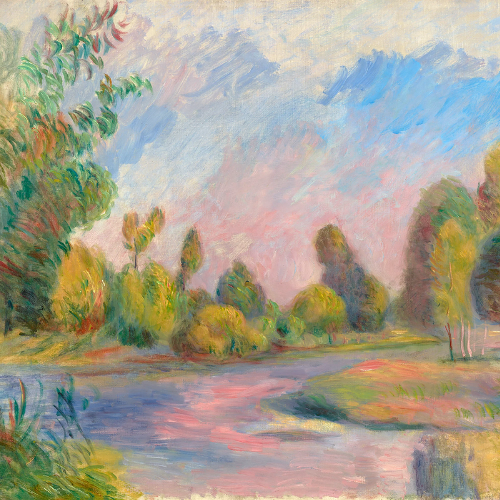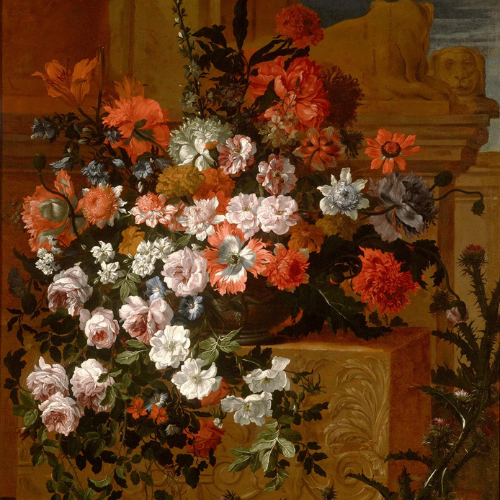Rembrandt Harmenszoon van Rijn, known simply as Rembrandt, remains one of the important figures in art history and certainly the most significant of the Dutch Golden Age. A master in three different media, he was arguably the greatest etcher to have ever lived, creating a body of work that spanned subjects and genres. Both successful and prolific, his oeuvre boasts close to 300 authenticated prints, and his innovative etching technique was without precedent. Above all, he was one of history’s greatest visual storytellers, possessing the rare ability to craft a compelling narrative of works on paper and canvas. This, coupled with his masterful draftsmanship, made him remarkably sought after during his lifetime and even more so after his death.

Indeed, his popularity has only grown — today, his Pendant Portraits of Maerten Soolmans and Oopjen Coppit claim the number two spot on lists of the world’s most expensive Old Master and original art pieces. The pair brought in $195 million at auction in 2016, second only to Leonardo da Vinci’s infamous Salvator Mundi. Yet, unlike da Vinci, who completed relatively few works, Rembrandt produced an extraordinary volume of work that today can be found in the most important museums around the world. Read on to learn more about this remarkable artist and his unparalleled contributions to the fascinating art world of the 17th century.
Rembrandt Biography


Born in Leiden in 1606, Rembrandt began training as an artist at the young age of 14; by 19, he had already established himself as an independent painter of renown. By 1628, Rembrandt’s work was already being highly praised, most significantly by the secretary to the Prince of Orange, Constantijn Huygens, who remarked on his ability to capture emotion and feeling through gesture. He began to take on pupils, and, in 1931, he became involved with the Amsterdam art dealer Hendrik van Uylenburgh, further securing his financial stability.
While his success reflects his immense talent and versatility as an artist, in many ways, it is also a reflection of his specific time and place. Rembrandt lived during a time of incredible economic, scientific and cultural prosperity in the Netherlands. Known as the Dutch Golden Age, it was a period when the arts flourished in the small European nation, revolutionizing the way art was made – and for whom it was created. With an influx of wealth and the emergence of new technology, both the upper and middle classes had the means to purchase art, as prints and etchings offered a more affordable medium for the less affluent. Embracing printmaking, Rembrandt's work disseminated to an entirely new group of clientele.
An Innovative New Technology

Printmaking first emerged in the Netherlands in the early 16th century, and it rapidly gained in popularity as a powerful new merchant class clamored for works by the country’s most renowned artists. Rembrandt stood out among the best printmakers of the era as he exploited the medium to its fullest He often utilized the same techniques that set apart his paintings, such as chiaroscuro, and successfully translated the technique to copper plate. Rembrandt’sfluid lines, delicate cross-hatching and subtle tonalities allowed him to achieve the same sense of atmosphere that made his paintings so distinctive.
It was not an easy task. Rembrandt used an etching technique known as intaglio printmaking, a process that involves making precise incisions and groves into a plate through a process called “biting.” First, a thin wax-like layer known as the “ground” is applied to a metal etching plate. It is into the ground that the design is drawn with a needle, and just the right amount of pressure must be used to expose the surface of the metal without marring it. Translating detail and shadow to this plate was incredibly time-consuming and required both patience and superior draftsmanship.

When the drawing is complete, the plate is submerged in acid, which eats away at the exposed metal, leaving the areas beneath the ground intact.Acidity levels and the amount of time the plate is left in the bath affect the resulting depth of the incisions. Rembrandt became so adept at the technique that he could even manipulate the plate in the acid to achieve a range of shallow and deep grooves, creating a compelling level of depth in the resulting image.
After this process, ink is applied to the plate and then wiped from its surface so that it only remains in the grooves. Next, both the plate and paper are placed in a press, which forces the ink in the grooves to adhere to the paper. Rembrandt was particularly renowned for his experimentation at this part of the process, sometimes purposefully leaving ink on the surface of the plate in order to create a more painterly impression on the final print. This is why Rembrandt’s print works can differ so significantly between states — the first state of a Rembrandt print may be cleanly impressed, while a third state may have been impressed with a fair amount of ink left on the plate, resulting in a moodier, darker atmosphere.
A High Degree of Artistry

Rembrandt’s talent for printmaking came from a lifetime of experience. He began printmaking early in his life, developing the skill parallel to his career as a painter. His earliest print was a self portrait, reflecting the artist’s experimentation with expression and emotion through an exploration of his own features on the plate. As he developed his technique and his skill in the art form grew, he expanded his repertoire to include more formal, commissioned portraits, as well as history, genre and biblical scene art. His images of everyday life still feel highly modern to this day, while his renowned and ever-popular Old Testament scenes continue to evoke the same reverence and spirituality that made them so beloved in his lifetime.
Between 1626 and 1660, the artist would come to create some 300 etchings; regrettably, only about 79 Rembrandt etchings remain in existence today. Since he owned and operated his own printing press, he was able to experiment with etching techniques and continuously push the envelope, often treating his plates the same way he would his canvases. Many of his experimentations in the medium were so groundbreaking that many of his techniques continue to impact printmakers to this day.
References:
Artist Biography: Rembrandt van Rijn (1606-1669). NGA.gov. Accessed February 25, 2022. https://www.nga.gov/press/exh/0168/bio-rembrandt.html
Rembrandt van Rijn (1606–1669): Prints. MetMuseum.org. Accessed February 25, 2022. https://www.metmuseum.org/toah/hd/rembp/hd_rembp.htm







